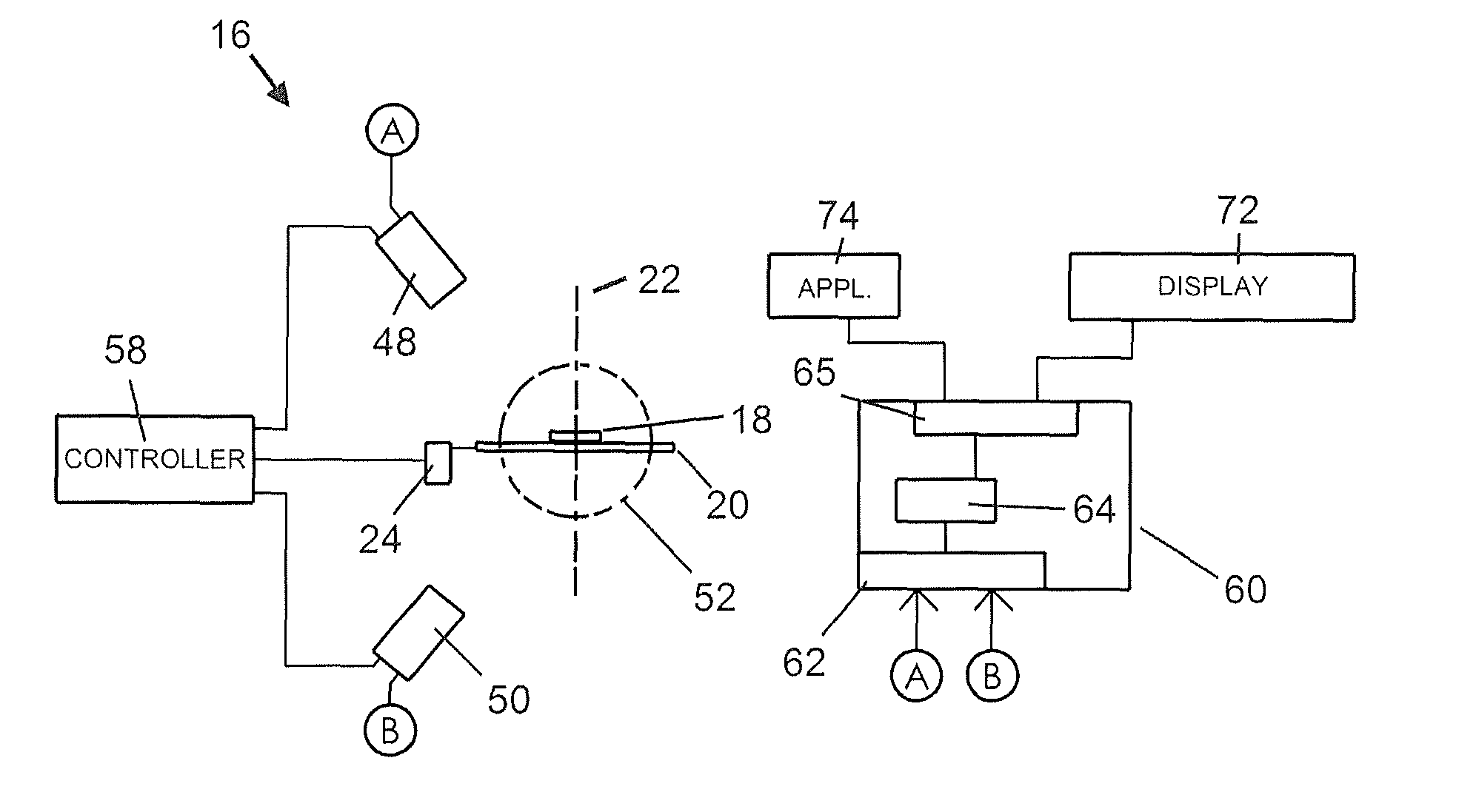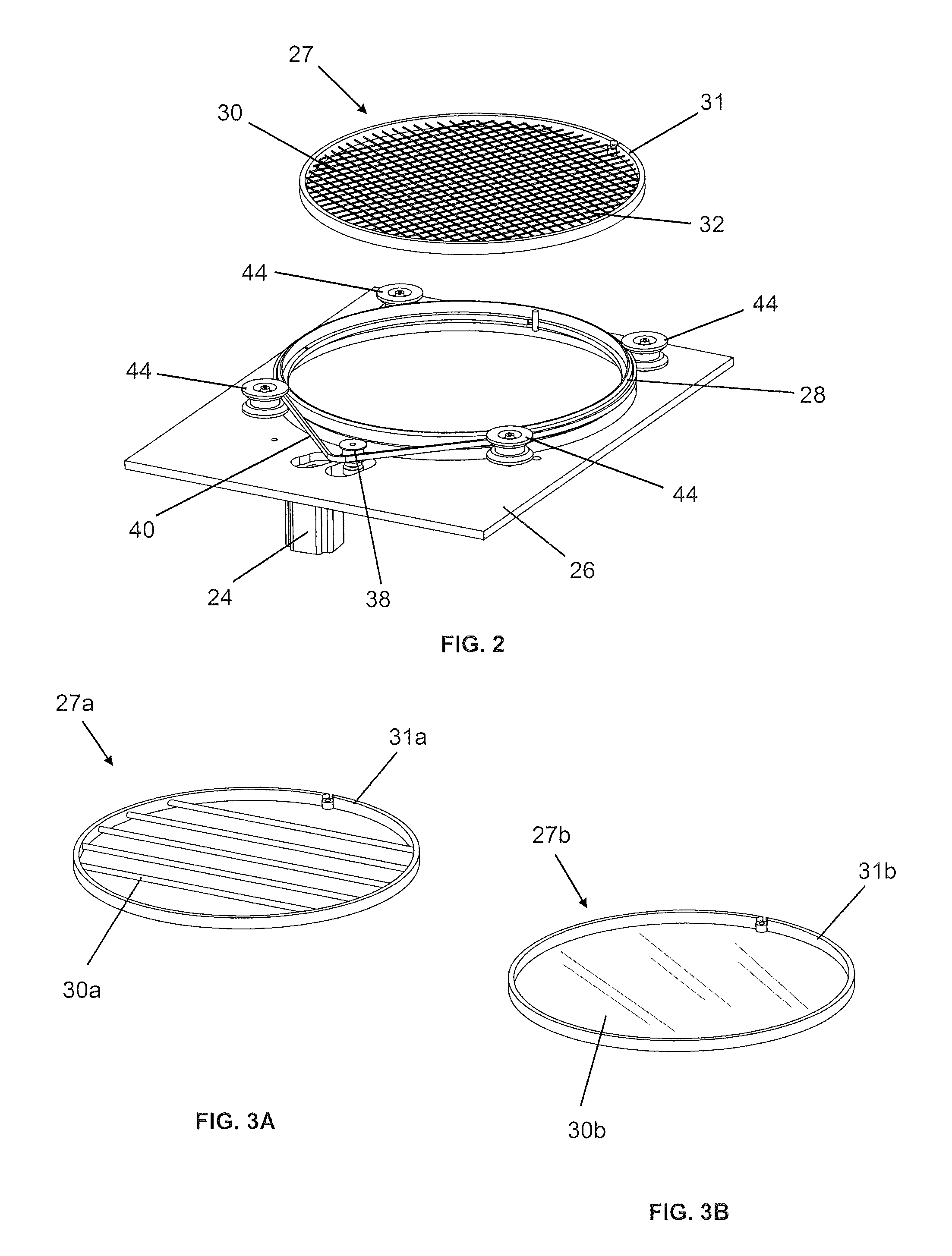Noncontact scanning system
a scanning system and non-contact technology, applied in the field of scanning devices and systems, can solve the problems of increasing the time, complexity and expense of scanning process, repositioning objects, and measurement of size in multiple directions that would require multiple reorientations of objects, and achieves the effect of convenient triangulation and high degree of precision
- Summary
- Abstract
- Description
- Claims
- Application Information
AI Technical Summary
Benefits of technology
Problems solved by technology
Method used
Image
Examples
Embodiment Construction
[0042]Turning now to the drawings, FIG. 1 illustrates an object scanning system 16 configured to perform a complete exterior surface scan of an object, and to use data generated by the scanning sequence to generate a three dimensional representation of an entire continuous exterior shape of the object. An object 18 to be scanned is supported for controlled motion on a table or base 20 having a horizontal upper surface and rotatable about a vertical axis 22 with respect to a fixed support frame. A motor 24 is operatively coupled to table 20 to controllably rotate the table and object 18, at a constant speed or in a sequence of steps for indexing the position of the object, as required.
[0043]FIG. 2 shows the object support structure in more detail. Table 20 includes a stationary frame or platform 26 and a circular rim 28 mounted to rotate relative to the platform. An insert 27 includes a circular rim 31 and multiple carbon fiber rods 30 extended in two perpendicular directions to form...
PUM
 Login to View More
Login to View More Abstract
Description
Claims
Application Information
 Login to View More
Login to View More - R&D
- Intellectual Property
- Life Sciences
- Materials
- Tech Scout
- Unparalleled Data Quality
- Higher Quality Content
- 60% Fewer Hallucinations
Browse by: Latest US Patents, China's latest patents, Technical Efficacy Thesaurus, Application Domain, Technology Topic, Popular Technical Reports.
© 2025 PatSnap. All rights reserved.Legal|Privacy policy|Modern Slavery Act Transparency Statement|Sitemap|About US| Contact US: help@patsnap.com



